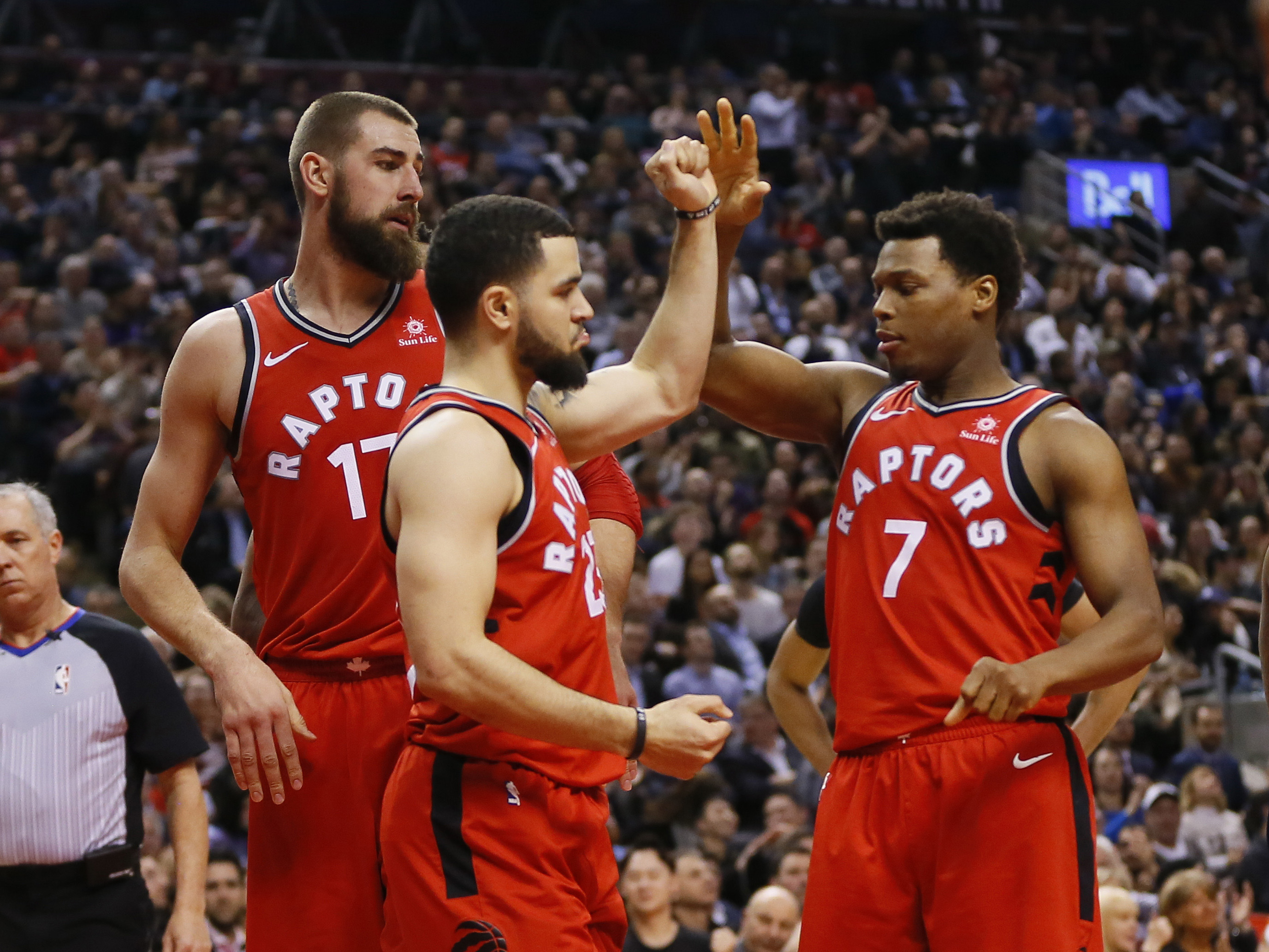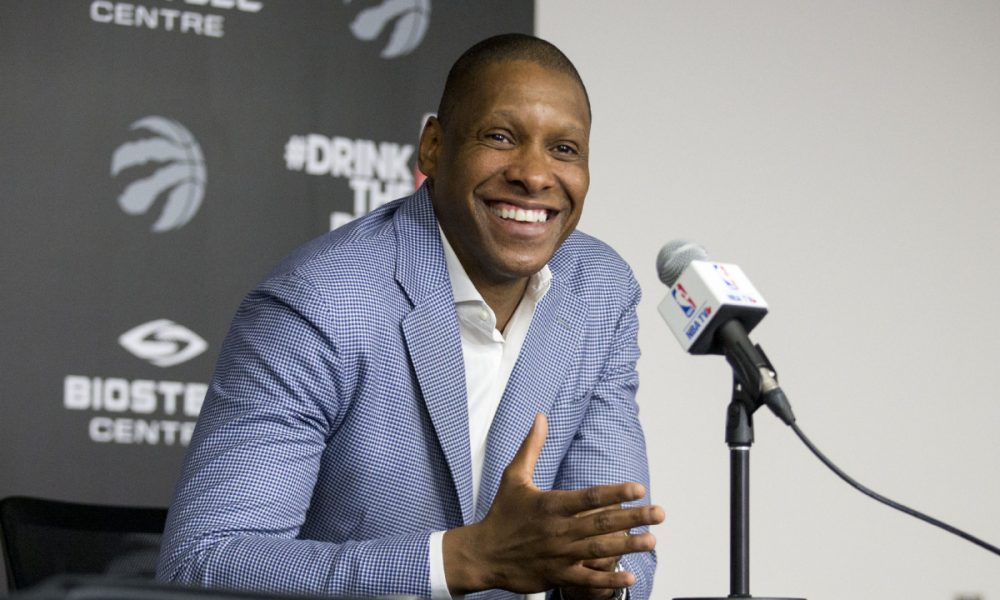Two seasons ago, the first time the Raptors lost in the playoffs at the hands of the Cleveland Cavaliers, the numbers told a clear story about that team. That group of Raptors simply lived by the rule that when Kyle Lowry was on the court, they played like an elite team, one of the best in the entire league, and when he went to the bench they struggled. There were exceptions to this rule, but by and large, it worked this way. Lowry’s minutes piled up over the course of the season alongside the team’s win total, and he wore down towards the end of the year and didn’t have enough gas in the tank as they sputtered through the playoffs, managing to land in the Eastern Conference Finals but losing that series handily.
It’s hard to tell if it was by design or accident, whether the team set up to correct that dependency on Lowry last season or it was just a result of the team’s success in bringing their young players along, but the emergence of Fred VanVleet and the immediate impact of OG Anunoby did change that dynamic for the Raptors. The bench, for the first time, found a group that was successful with Lowry able to rest, which allowed him to bring his minutes down, while the starting lineup, the one place where Lowry’s impact simply hadn’t held true in seasons past, finally found it’s groove with OG Anunoby playing at the small forward spot, and with his shot working for most of the season and him embracing the job of guarding the opposing team’s best player on a nightly basis, they were able to win the majority of their minutes on the court, building leads that the bench later finished off, giving the Raptors’ veteran point guard the ability to take fourth quarters off during the middle of the season.
We all know how this ended though, as the Raptors ran into LeBron again in the postseason and once again simply looked like they didn’t belong in that series, and yet another great Raptors season became a bittersweet memory of a team that couldn’t live up to the promise they showed. Maybe if VanVleet hadn’t been injured in the final game of the season as the team chased a 60th victory, the bench wouldn’t have fallen off so hard in the postseason and they would’ve been able to carry themselves to postseason success the same way they found their regular season wins. That hypothetical isn’t one we can really answer though, because the injury to Fred did happen, and the bench couldn’t deliver those big minutes they were needed for, as the starters lost their footing against the best player in the conference.
Before that, however, the Raptors had to get through the Washington Wizards, and they had to call on Lowry again to fix the problems the team faced. Bradley Beal was able to go off in games three and four, and his impact allowed the Wizards to overpower Toronto in each game, and with John Wall also having an effective series, they needed someone to step up and effectively guard the player who was not being taken by Anunoby. The Raptors made the unusual call late in the series to use their smaller point guard on Beal, accept that they’d be giving up a significant height difference, and trust Kyle’s toughness to come through, and that paid off.
This summer, with the move to bring in Kawhi Leonard, that dependency on Lowry is lessened even further. Leonard is a capable enough offensive creator with the ball in his hands, and rookie coach Nick Nurse has suggested an increased dependence on Jonas Valanciunas this season as well at that end of the floor. As well, both VanVleet and fellow bench guard Delon Wright both could look to have their role increased, and Pascal Siakam showcased his skills as a ballhandler last season and has lots of room to grow in that part of his game. All of this isn’t necessarily a problem for Lowry, who is one of the league’s best three-point shooters and doesn’t need the ball in his hands to be effective, providing space for others to work when on the floor with another player as the primary initiator, but it does create space for him to not need to be the best version of himself at all times in order for the team to perform.
At the defensive end, Lowry has, like in the series against Washington, guarded up a position or two whenever necessary, taking assignments where he’s giving up significant height deficits and embracing that challenge, allowing one of his teammates to take an easier assignment and preserve energy for the other end of the floor, or to find a matchup they’re better suited to.
With Leonard and fellow former Spur Danny Green inbound and both being high quality perimeter defenders, Lowry will, for the first time since his arrival in Toronto, find himself playing in lineups where he’s the perimeter defender best suited to the easiest assignment, allowing him to preserve energy for the big moments when he needs to be KLOE.
Lowry is 32 at this point, as many in the media like to remind us on a regular basis, and there were areas last season where he took a step back, with less points per game than previous seasons. That might’ve been more him reshaping his game to assist the team in rebuilding their offense last year, as he managed to increase his assists and have his highest rebounding percentage since his rookie year. This year, yet again, the team will require different things from him. He won’t have to be the player who makes every lineup work, he won’t have to be the toughest defender on the perimeter on a nightly basis, and it’s not clear what his moments will look like this season, but the team is built better to help him be prepared and have something remaining in the tank for those moments, and that’s how they managed to get him to the playoffs healthy last year, for the first year with the All-Star guard as a Raptor, and that should also be the plan to repeat that process. Requiring Lowry to do less most of the time might be the path to enabling him to do more when the team needs it most.



